Nov. 30, 2024
Prelims Pointers
Nov. 30, 2024
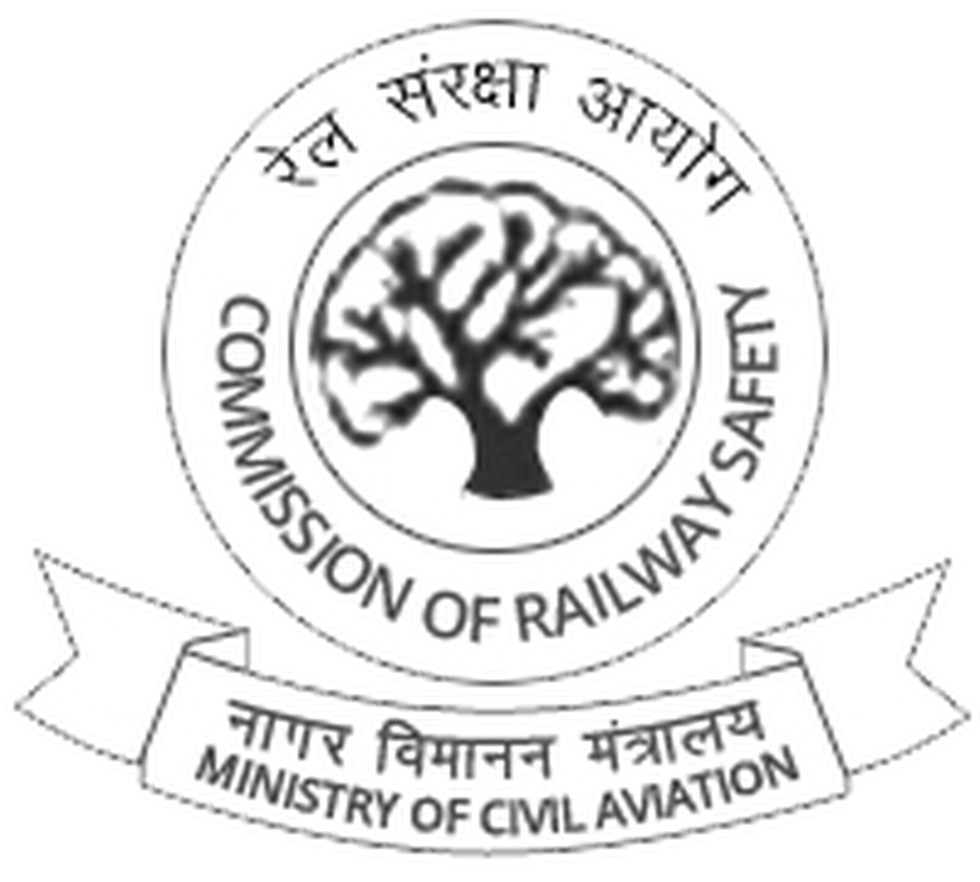
About Commission of Railway Safety:
- It is a statutory body that acts as the railway safety authority in the country.
- It deals with matters pertaining to safety of rail travel and train operation and is charged with certain statutory functions as laid down in the Railways Act, 1989 which are of an inspectorial, investigatory & advisory nature.
- The most important duty of the Commission is to ensure that any new Railway line to be opened for passenger traffic conforms to the standards and specifications prescribed by the Ministry of Railways.
- The Commission also conducts statutory inquiries into serious train accidents occurring on the Indian Railways and makes recommendations for improving safety on the Railways in India.
- It is working under the administrative control of the Ministry of Civil Aviation of the Government of India.
- The reason or principle behind this, put simply, is to keep the CRS insulated from the influence of the country’s railway establishment and prevent conflicts of interest.
- It is headed by a Chief Commissioner of Railway Safety (CCRS).
- Headquarter: It is headquartered in Lucknow, Uttar Pradesh.
Prelims Pointers
Nov. 30, 2024
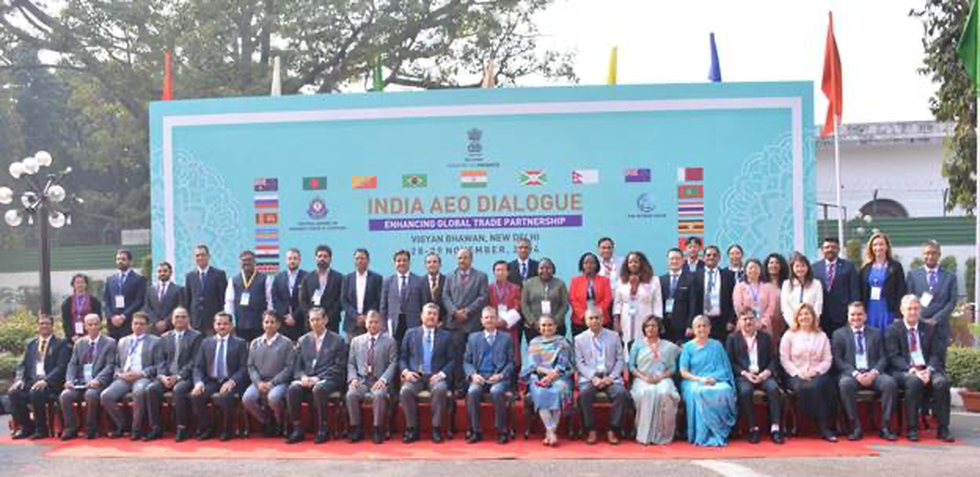
About Authorised Economic Operator (AEO) Programme:
- It is a programme under the aegis of the World Customs Organization (WCO) SAFE Framework of Standards to secure and facilitate Global Trade.
- It aims to enhance international supply chain security and facilitate movement of legitimate goods.
- Under this programme, an entity engaged in international trade is approved by Customs as compliant with supply chain security standards and granted AEO status & certain benefits.
- An AEO is a business entity involved in the international movement of goods requiring compliance with provisions of the national customs law.
- It is approved by or on behalf of the national administration in compliance with the World Customs Organization (WCO).
- The WCO in June, 2005, with a view to secure the international supply chain, adopted the SAFE Framework of Standards (WCO SAFE FoS).
- AEO is one of the three pillars on which the SAFE FoS is formed.
- AEO helps to build a closer partnership between the customs department and the trade industry.
- WCO SAFE FoS is the basis of the Indian AEO programme.
What is the India AEO programme?
- It was introduced in India by the Central Board of Indirect Taxes and Customs (CBIC) in 2011.
- It is a voluntary programme administered by the CBIC.
- It seeks to provide benefits in the form of simplified customs procedures and faster customs clearances to those business entities that offer a high degree of security guarantees regarding their role in the supply chain.
- Thus, an entity with an AEO status can be considered a reliable trading partner and a secure trader.
- This segmentation approach enables customs resources to focus on less-non-compliant or risky businesses for control.
Prelims Pointers
Nov. 30, 2024
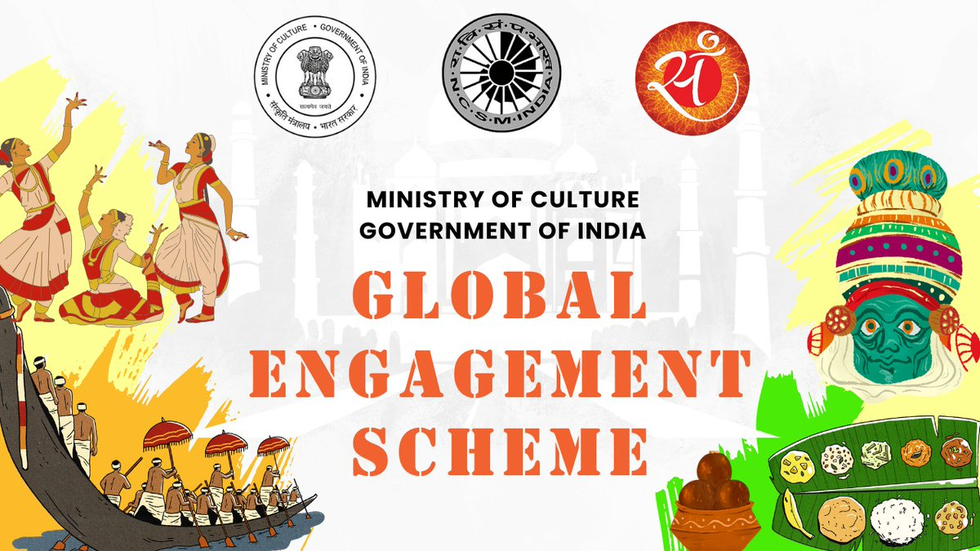
About Global Engagement Scheme:
- It was previously known as the Scheme for promotion of International Cultural Relations.
- It promotes India’s rich cultural heritage and enhances India’s image in the global arena in a concerted manner.
- It has following three components:
- Festival of India: It is organized abroad to promote people to people connect and bilateral cultural contacts. The artists from diverse cultural fields such as Folk Art including Folk Music, Folk Dance, Folk Theatre & Puppetry, Classical and Traditional Dance, Experimental/ Contemporary Dance, Classical/ Semi Classical Music, Theatre etc. perform in the ‘Festivals of India’ abroad.
- Grant in aid to Indo Foreign Friendship Cultural Societies Scheme: The Grants under this scheme will be sanctioned with the object of fostering closer friendship and cultural contacts between India and foreign countries concerned.
- Contribution Grant: This component is meant for Indian contribution towards membership of International Organizations like ICROM, UNESCO, World Heritage Fund and to facilitate Indian participation and hosting of international meetings
- Nodal Ministry: Ministry of Culture
Prelims Pointers
Nov. 30, 2024
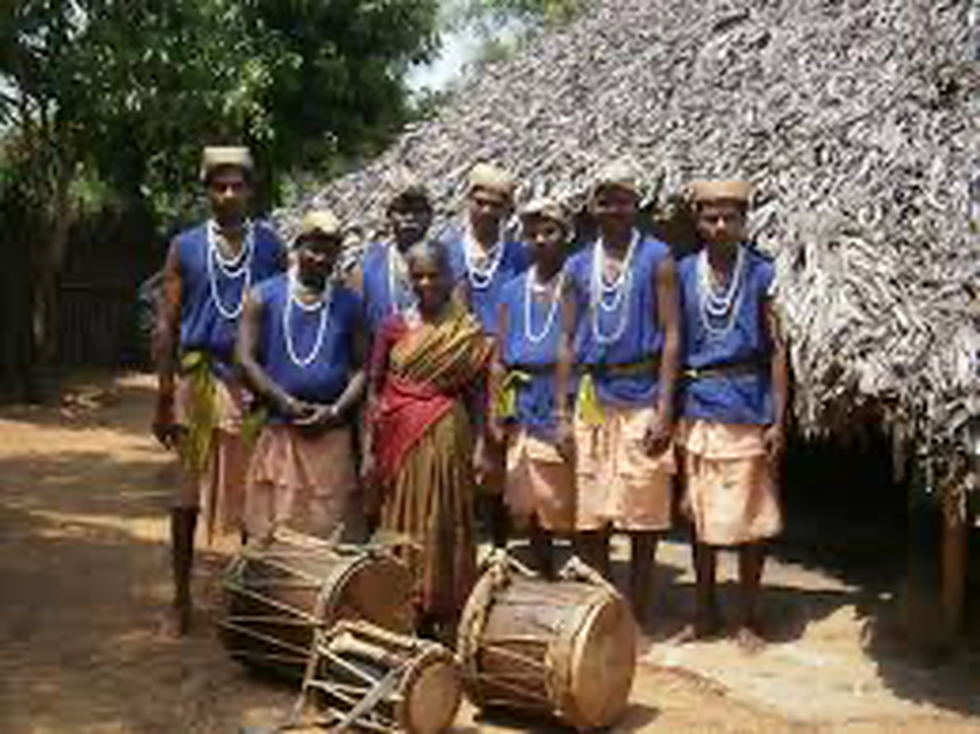
About Koraga Tribe:
- Koragas are one of the Particularly Vulnerable Tribal Groups (PVTG) found in the southern part of India particularly Kerala and Karnataka.
- Language: At present most of the Koragas are speaking Tulu language but they have their own independent language.
- Koragas are divided into a number of exogamous clans or sects. The clan is known as bali. There are 17 balis found among Koragas.
- Economy: The Korags are basically agriculturists and depend for their livelihood on the forest produce such as bamboo, cane, creepers for basketry.
- They sing songs and perform folk dances, rituals and magics to appease their deity for bountiful crops and eradicate epidemics.
- Dholu and Voote (Drum and Flute) are among two important musical instruments of the Koragas.
- The Family among the Koraga is matrilineal, the decent being reckoned along the female line. But residence after marriage is patrilocal.
- The property is equally divided among both sons and daughters.
- The Koragas were worshippers of different Bhuta’s (Bhuta Kola is a ritual folk dance in Tulu Nadu) such as Panjurli, Kallurti, Korathi and Guliga etc.
Prelims Pointers
Nov. 30, 2024
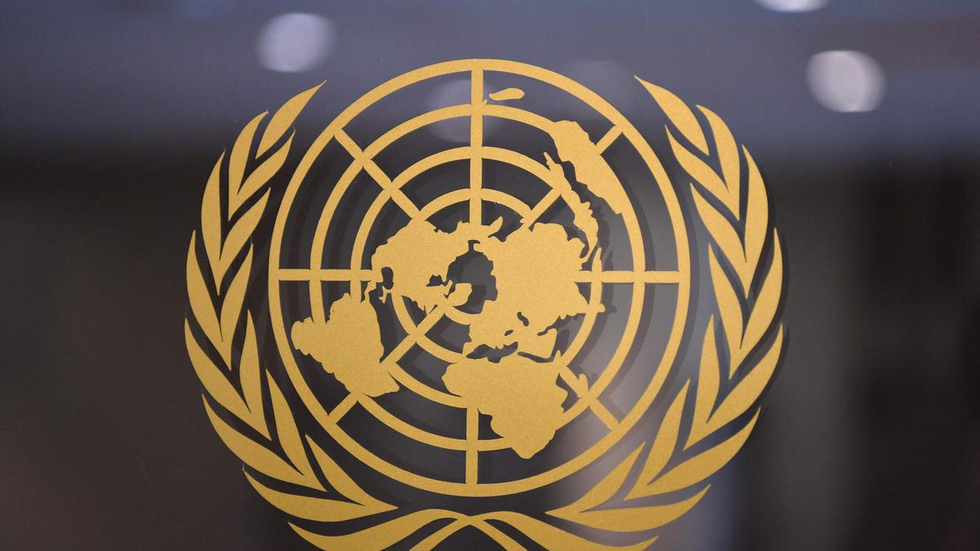
About UN Peacebuilding Commission:
- It was established on 20 December 2005 by resolutions of the United Nations General Assembly and the UN Security Council.
- It is an intergovernmental advisory body that supports peace efforts in conflict-affected countries and is a key addition to the capacity of the International Community in the broad peace agenda, according to its website.
- The PBC is composed of 31 Member States, elected from the General Assembly, the Security Council and the Economic and Social Council.
- The top financial contributing countries and the top troop-contributing countries to the United Nations system are also members.
- The Commission is mandated
- To bring together all relevant actors to marshal resources and to advise on and propose integrated strategies for post-conflict peacebuilding and recovery;
- To focus attention on the reconstruction and institution-building efforts necessary for recovery from conflict and to support the development of integrated strategies in order to lay the foundation for sustainable development.
- To provide recommendations and information to improve the coordination of all relevant actors within and outside the United Nations,
- To develop best practices, to help to ensure predictable financing for early recovery activities and to extend the period of attention given by the international community to post-conflict recovery, the Commission said.
- The Commission also focuses on promoting an integrated, strategic and coherent approach to peacebuilding.
- India is among the largest contributors of uniformed personnel to U.N. Peacekeeping.
- It currently deploys about 6,000 military and police personnel to UN operations in Abyei, the Central African Republic, Cyprus, the Democratic Republic of the Congo, Lebanon, the Middle East, Somalia, South Sudan, and Western Sahara.
Prelims Pointers
Nov. 30, 2024
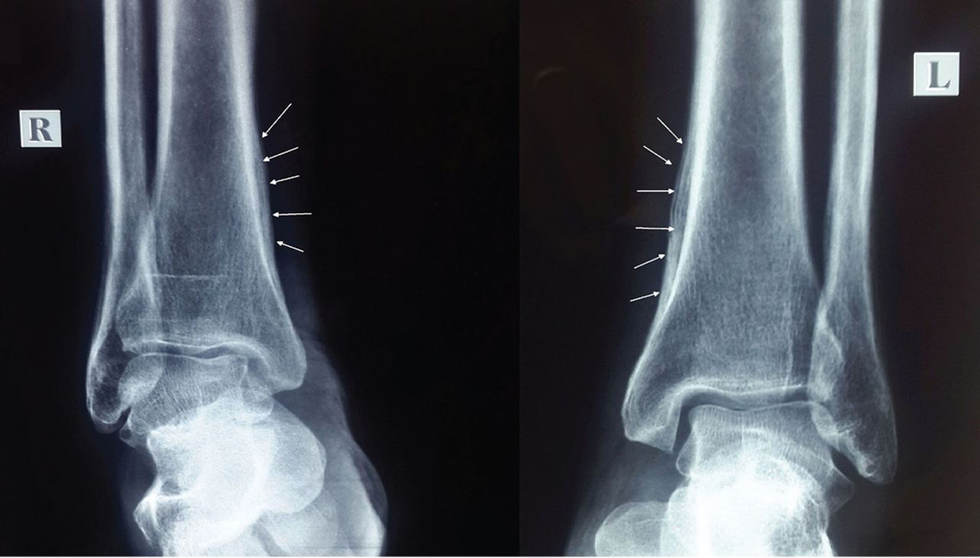
About Handigodu Disease:
- It is a rare and peculiar osteoarthritic disorder (bone and joint disease) prevalent in Shimoga and Chikmagalur Districts of Karnataka.
- It is named after the village of Handigodu, where it was first noticed, in Shimoga district of the state of Karnataka.
- It is an inherited degenerative osteoarthropathy.
- In this progressive skeletal system disorder, affected individuals are presented with severe joint and hip pain.
- In certain extreme cases in adults, crippled individuals are made to crawl due to pain.
- Lack of normal growth is noticeable from early childhood, such as deformation of the limbs and dwarfism.
- Symptom onset is at preadolescence (as early as age 10) to young adulthood.
- Difficulty in walking and pain in hip joints eventually affect HS patients' locomotion and nominal routine chores.
- The prevalence of HS in the general population may not be meaningful as it is restricted to a specific geographic region. However, it is known to have killed over 1000 people since it was first noticed around 1975.
- Though not clinically identical, Handigodu Disease is akin to Mseleni Joint Disease in the Zululand of South Africa.
Prelims Pointers
Nov. 30, 2024

About Phlegraean Fields:
- The Phlegraean Fields (also known in Italian as ‘Campi Flegrei’) is an active volcanic area located in the vicinity of Naples, Italy.
- Unlike the nearby Mount Vesuvius, Campi Flegrei is not characterised by a single volcano.
- It is more of a volcanic system, with several centres situated within a depressed area called a caldera (essentially a deep sinkhole or cauldron).
- The caldera has a diameter of about 12-15 km (7.5-9.3 miles).
- It was formed 39,000 years ago after an eruption emptied it of magma. According to a new hypothesis, this eruption could have been the beginning of the end of the Neanderthal.
- One-third of it lies under the Tyrrhenian Sea, between the Italian mainland and the country’s island of Sardinia.
- It is the largest active caldera in Europe. It is much larger than the cone-shaped Vesuvius, which destroyed the ancient Roman city of Pompeii in AD79, and is much more active.
- Phlegraean Fields has been in a restless state since 1950. It is a result of a phenomenon known as bradyseism, which scientists understand to be the gradual movement of part of Earth’s surface caused by the filling or emptying of an underground magma chamber or hydrothermal activity.
- It last erupted in 1538, after an interval of about 3000 years. This eruption, although minor in comparison, formed Monte Nuovo, a new mountain.
- Scientists consider Phlegraean Fields to be a supervolcano whose eruptions can have worldwide effects.
- These volcanic fields are among the top eight emitters of volcanic carbon dioxide worldwide.
Prelims Pointers
Nov. 30, 2024
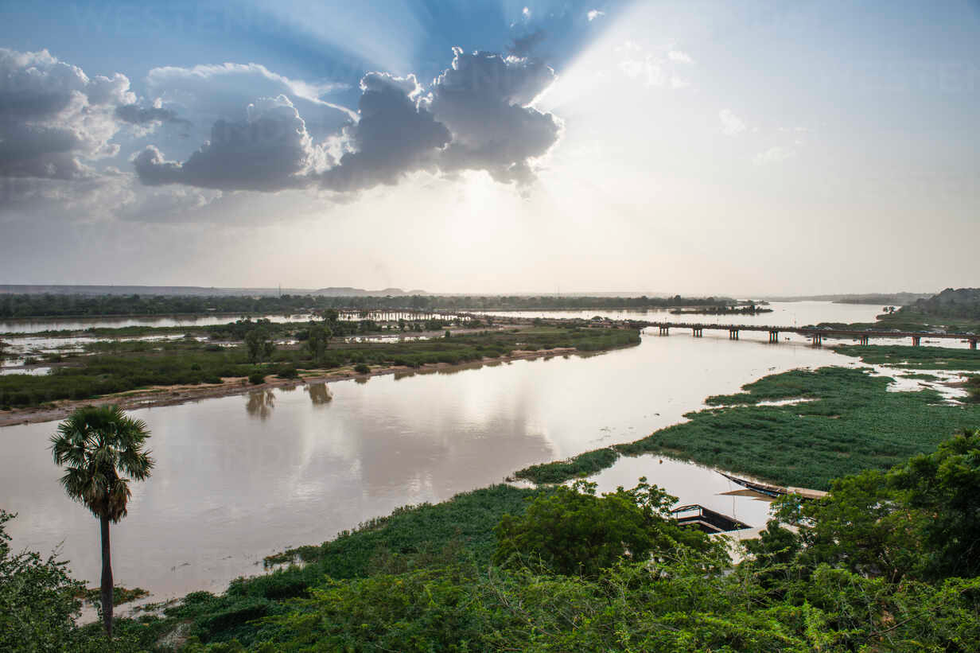
About Niger River:
- It is the principal river of western Africa.
- With a length of 2,600 miles (4,200 km), it is the third longest river in Africa, after the Nile and the Congo.
- In West Africa, it’s the longest and largest river and is nicknamed the "Boomerang River" due to its serpentine shape.
- Course: The Niger rises in Guinea 150 miles (240 kilometers) from the Atlantic Ocean, from where the river detours into the Sahara Desert, taking a sharp right turn near Mali’s Timbuktu city, and then flowing southeast into the Gulf of Guinea.
- Niger, Guinea, Côte d'Ivoire, Mali, Burkina Faso, Algeria, Benin, Chad, Cameroon and Nigeria are the ten African countries that the river runs through.
- The Niger River Basin covers 7.5 percent of the African continent, and its main tributary is the Benue River.
Prelims Pointers
Nov. 30, 2024

About High Energy Stereoscopic System (HESS) observatory:
- It is an array of Cherenkov Telescopes located in the Khomas Highlands in Namibia.
- It started operations in 2003 and has been operated very successfully since then.
- It observes gamma rays, the most energetic form of light, in the very high energy range (>100 GeV), which are produced by some of the most violent processes in the universe.
- Being in the southern hemisphere, it is very well located for observations of gamma-ray sources within our galaxy, the Milky Way.
- Since gamma rays cannot penetrate the Earth's atmosphere,it detects them indirectly via their interactions with the air molecules.
- Besides sources from our Milky Way sources, it has a rich and wide physics program, covering also outbursts in very distant galaxies and fundamental physics questions related to dark matter and Lorentz invariance.
- The HESS observatory is operated by a collaboration of more than 260 scientists from about 40 scientific institutions and 13 different countries.
Prelims Pointers
Nov. 30, 2024
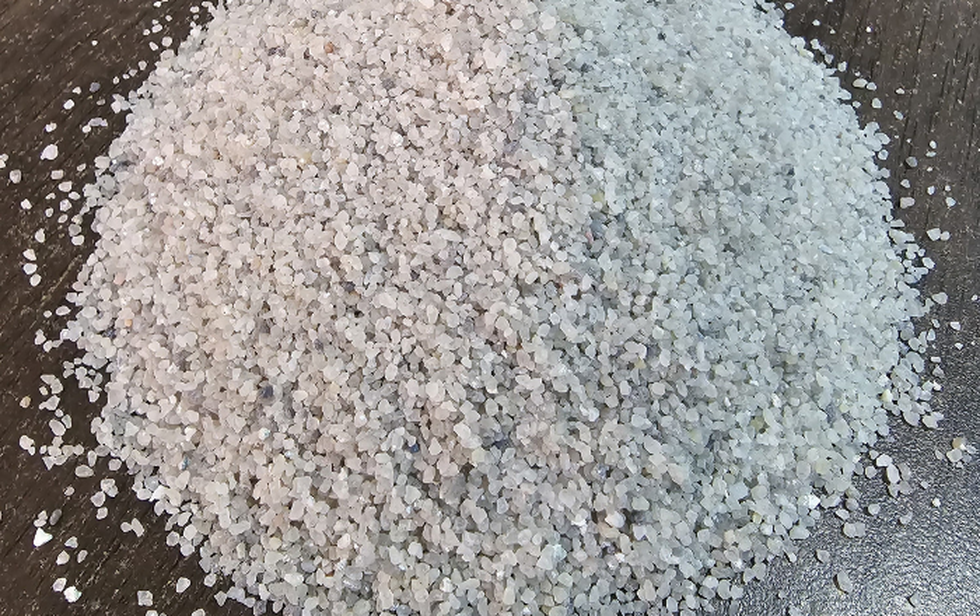
About Silica:
- Silica is another name for the chemical compound composed of two most abundant elements in Earth’s crust, silicon and oxygen, SiO2.
- The mass of Earth’s crust is 59 percent silica, the main constituent of more than 95 percent of the known rocks.
- Silica exists in many different forms that can be crystalline as well as non-crystalline (amorphous).
- Silica has three main crystalline varieties: quartz (by far the most abundant), tridymite and cristobalite.
- Other varieties include coesite, keatite and lechatelierite.
- Uses:
- Silica sand is used in buildings and roads in the form of portland cement, concrete and mortar, as well as sandstone.
- Silica is also used in grinding and polishing glass and stone; in foundry molds; in the manufacture of glass, ceramics, silicon carbide, ferrosilicon, and silicones; as a refractory material; and as gemstones.
- Silica gel is often used as a desiccant to remove moisture.
Nov. 29, 2024
Prelims Pointers
Nov. 29, 2024
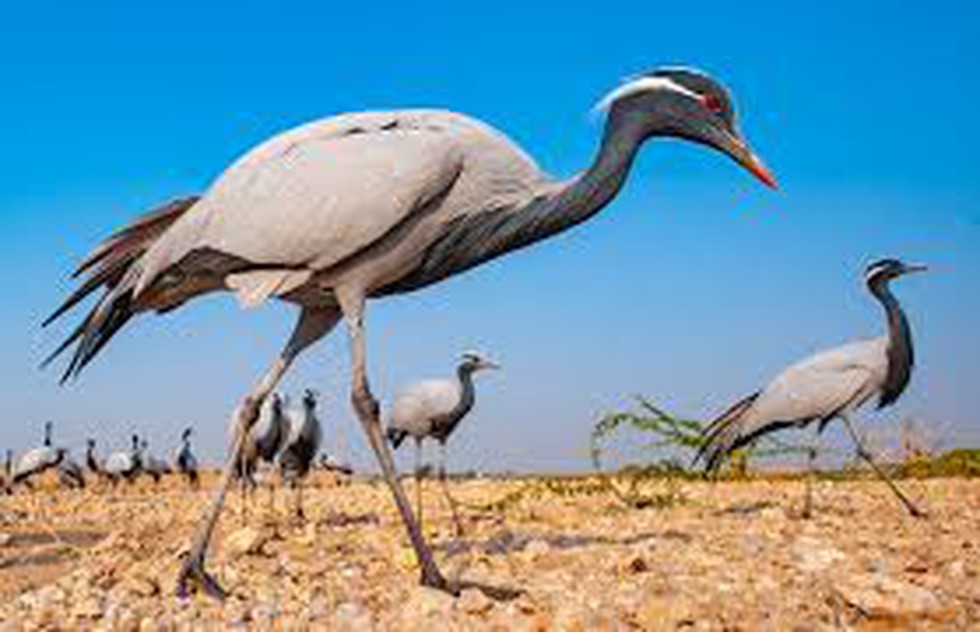
About Siberian Demoiselle crane:
- It is the smallest of crane species which is both solitary and social in behavior.
- This bird is symbolically significant in the culture of India, where it is known as Koonj or Kurjaa.
- These cranes are migratory birds, travelling long distances from their breeding to their wintering grounds.
- Habitat: It inhabits fields, deserts, steppes, and plains with water in general vicinity.
- Distribution: They are found in Central Euro Siberia, ranging from the Black Sea to Mongolia and Northeast China.
- Breeding range: They breed in Central Eurasia, from the Black Sea to North East China and Mongolia. In winters, it breeds in the Indian subcontinent and sub-Saharan Africa.
- While Demoiselle cranes typically travel through Himalayan valleys and enter India via Nepal, Sukpak took a different route, flying through Russia, Kazakhstan, Turkmenistan, Afghanistan and Pakistan before entering India through Jaisalmer.
- Conservation efforts in India: Khichan is a key stop for migratory birds in Rajasthan also it has become India’s first reserve dedicated to this species.
- Conservation status
- IUCN: Least Concern
- Threats: They are threatened by drainage of wetlands and habitat loss, illegal pet trade and suffer hunting pressure.
Prelims Pointers
Nov. 29, 2024
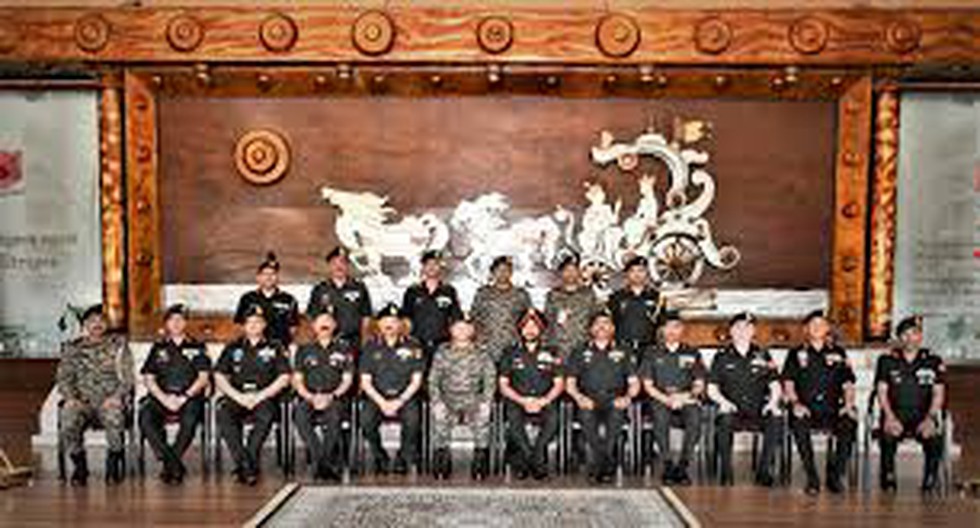
About Eklavya Digital Platform:
- It has been developed under the aegis of Headquarters Army Training Command with Army War College as the sponsor agency.
- The platform has been developed by the “Bhaskaracharya National Institute of Space Applications and Geoinformatics” (BISAG-N), Gandhinagar, along with support from the Directorate General of Information Systems.
- This platform has been hosted on the Army Data Networkand features a scalable architecture. This enables Headquarters Army Training Command to seamlessly integrate any number of training establishments of the Indian Army, each capable of hosting an extensive range of courses.
- This initiative aligns with the Indian Army propelling itself into the “Decade of Transformation” as envisioned by the COAS and also with Indian Army’s theme for 2024 as the “Year of Technology Absorption.”
- Student officers are permitted to register for multiple courses simultaneously.
- There are three categories of courses hosted
- ‘Pre-Course Preparatory Capsules’: It has study material for all offline physical courses being conducted at various Category ‘A’ training establishments. The aim is to shift the “basics” to the online courses so that physical courses have more and more contemporary content with a focus on the “application part”.
- Appointment or specific assignment-related courses: The courses in this category will also enable the officers to get domain specialisation in the field of their choice, which will further aid their employment planning.
- Professional Development Suite: It will include courses on Strategy, Operational Art, Leadership, Organisational Behaviour, Finance, Art of Reading, Power Writing, Emerging Technology etc.
- The Eklavya also has the functionality of a searchable “Knowledge Highway”, wherein various journals, research papers and articles etc are uploaded under a single window.
- The platform will go a long way in encouraging continuous professional military education in the officers, decongest and enrich the existing physical course, preparing officers for specialist appointments and encouraging domain specialisation.
Prelims Pointers
Nov. 29, 2024

About K-4 ballistic Missile:
- It is a nuclear-capable ballistic missile with a range of around 3,500 km.
- It is a solid-fuelled missile which was tested at least five times in the last few years from submersible platforms.
- The successful launch of the K-4 missile adds another layer of strength to India’s nuclear triad, which includes land-based missiles, air-launched nuclear weapons and submarine-launched platforms.
- It is developed by the Defence Research and Development Organisation (DRDO).
- Significance: It provides a major boost to India’s nuclear deterrence and strategic capabilities.
Key facts about the INS Arighaat
- It was commissioned in August 2024.
- It is India’s second nuclear-powered ballistic missile submarine (SSBN), following India's first nuclear submarine, INS Arihant.
- It was constructed at the Indian Navy's Ship Building Centre (SBC) in Visakhapatnam.
- It can carry up to four nuclear-capable K-4 SLBMs(Submarine Launched ballistic Missile) with a range of over 3500 kilometers or twelve conventional warhead K-15 SLBMs with a range of about 750 kilometers.
Prelims Pointers
Nov. 29, 2024

About OPEC +:
- It is a group of 22 oil-exporting countrieswhich meets regularly to decide how much crude oil to sell on the world market.
- These nations aim to work together on adjusting crude oil production to bring stability to the oil market.
- Origin: These nations came to an accord towards the end of 2016 “to institutionalize a framework for cooperation between OPEC and non-OPEC producing countries on a regular and sustainable basis.”
- At the core of this group are the 12 members of OPEC(the Organization of the Oil Exporting Countries), which are mainly Middle Eastern and African countries.
- Members: It comprises 12 OPEC countries plus Azerbaijan, Bahrain, Brunei, Kazakhstan, Russia, Mexico, Malaysia, South Sudan, Sudan and Oman.
What is OPEC?
- It is a permanent intergovernmental organization of oil-exporting countries.
- Formation: It was established in 1960 by the five founding members Iran, Iraq, Kuwait, Saudi Arabia and Venezuela.
- Currently, it has 12 members, including Algeria, Congo, Equatorial Guinea, Gabon, Libya, Nigeria and the United Arab Emirates.
- Angola withdrew its membership effective 1 January 2024.
- Headquarters: Vienna, Austria.
Prelims Pointers
Nov. 29, 2024
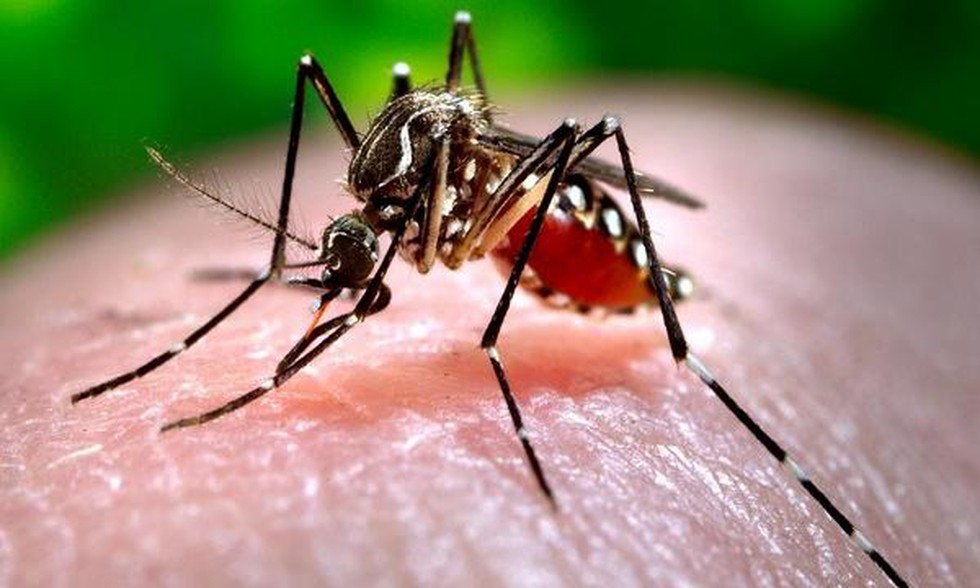
About Japanese Encephalitis:
- It is a potentially severe viral zoonotic disease caused by the Japanese Encephalitis(B) virus.
- Transmission:
- The virus is transmitted from animals, particularly pigs and birds belonging to the Ardeidae family, such as cattle egrets, pond herons, etc. to humans by the Culex mosquito of the Vishnui group.
- There is no human-to-human transmission of the virus.
- The disease is most common in rural areas of Asia, particularly during monsoon seasons when mosquito breeding is prevalent.
- Symptoms:
- It affects the brain, leading to symptoms like fever, headache, vomiting and neurological issues such as confusion, seizures and paralysis.
- While many infected individuals may show mild or no symptoms, severe cases can lead to permanent brain damage or death.
- Prevention and Treatment:
- Vaccination is the most effective prevention strategy, particularly in endemic regions.
- Early diagnosis and supportive treatment can help manage symptoms, but there is no specific antiviral treatment for Japanese Encephalitis.
- According to the Central Government guidelines, two doses of the vaccine have been a part of the Universal Immunisation Programme since 2013.
Prelims Pointers
Nov. 29, 2024

About AUKUS:
- It is a trilateral security partnershipbetween the United Kingdom, the United States of America and Australia agreed in 2021 that focuses on technology sharing in the Indo-Pacific region.
- The alliance is widely understood to be a strategic buildup in response to, and a deterrence against, Chinese aggression and ambitions in that strategically important area.
- It is intended to strengthen the ability of each government to support security and defense interests, building on longstanding and ongoing bilateral ties.
- It consists of two key pillars.
- Pillar 1focuses on supporting Australia to acquire its first conventionally armed, nuclear-powered submarine fleet. It does not involve the transfer of nuclear weapons to Australia.
- Pillar 2focuses on cooperation in eight advanced military capability areas: Artificial Intelligence (AI), quantum technologies, innovation, information sharing, and cyber, undersea, hypersonic, counter-hypersonic and electronic warfare domains.
- Submarine Component:
- It is designed to equip Australia with nuclear-powered attack submarines (SSNs).
- In total, Australia will end up with eightof the new nuclear submarines, called SSN-AUKUS.
- These submarines will be based on a British design but have American technologyor an American combat system.
- AUKUS will make Australia the seventh countryin the world to be armed with nuclear-powered submarines and the second, after the United Kingdom, with whom the United States has shared this technology.
- It will significantly enhance Australia’s undersea capabilities in the Indo-Pacific as nuclear-powered submarines offer many advantages, such as extended range, endurance, and stealth—features.
- These countries, however, made it clear that their aim is not to arm the new submarines with nuclear weapons. This is because Australia is a signatory to the Nuclear Non-proliferation Treaty (NPT), which bans it from acquiring or deploying nuclear weapons.
Prelims Pointers
Nov. 29, 2024

About Tato-I Hydroelectric Project:
- It will be located in Shi Yomi District of Arunachal Pradesh.
- The project, with an installed capacity of 186 MW (3 x 62 MW), is expected to be completed in 50 months and will generate 802 million units (MU) of electricity annually.
- The power generated will improve the power supply in Arunachal Pradesh and contribute to balancing the national grid.
- It will be developed through a joint venture between the North Eastern Electric Power Corporation Ltd. (NEEPCO) and the Arunachal Pradesh government.
- The Central Government will provide ₹77.37 crore for infrastructure such as roads, bridges and transmission lines, along with ₹120.43 crore in financial assistance for the state’s equity share.
- Arunachal Pradesh will receive 12% of the generated power for free, with an additional 1% allocated to a Local Area Development Fund (LADF).
Prelims Pointers
Nov. 29, 2024
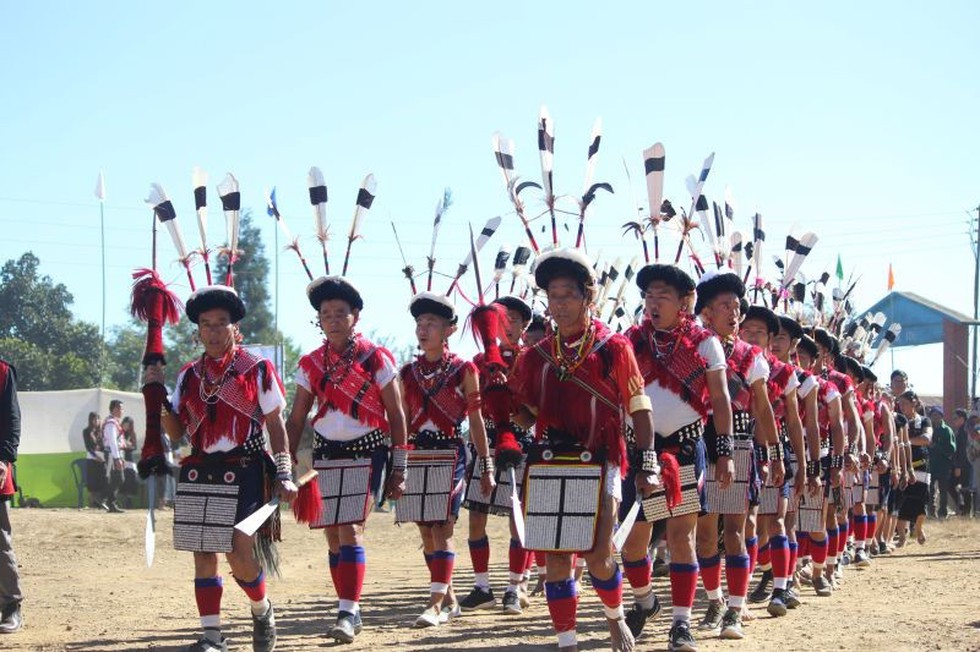
About Rengma Naga Tribe:
- The Rengma Naga are a Tibeto-Burman ethnic group inhabiting the Northeast Indian states of Nagaland and Assam.
- According to the 2011 Census of India, the population of Rengmas in Nagaland stands at 62,951 and the population of Rengmas in Assam is around 22,000.
- They call themselves by the names of "Njong" or "Injang".
- They belong to the Mongoloid racial stock.
- It is believed that Rengmas, along with other Naga tribes, migrated from Southeast Asia across the Yunnan Mountain ranges and settled down in the upper Burma region.
- Slavery used to be practised among the Rengmas, and the slaves were most commonly known by the names menugetenyu and itsakesa.
- By the time the Britishers arrived in the Naga region, slavery was a declining practice, and no Rengma appears to have been a slave during that time.
- Economy:
- The Rengma tribes are agriculturalists.
- They grow paddy through Jhum cultivation and wet cultivation. Besides paddy staple crops, seasonal crops and fruits are also grown.
- Religion: Traditionally, Rengma tribes are worshippers of supernatural beings. Now most of the Rengma tribes are
- Festivals:
- Rengma Tribes celebrate a lot of seasonal festivals that are related to the agriculture.
- "Ngada" is the most important festival of Rengma tribes.
Prelims Pointers
Nov. 29, 2024
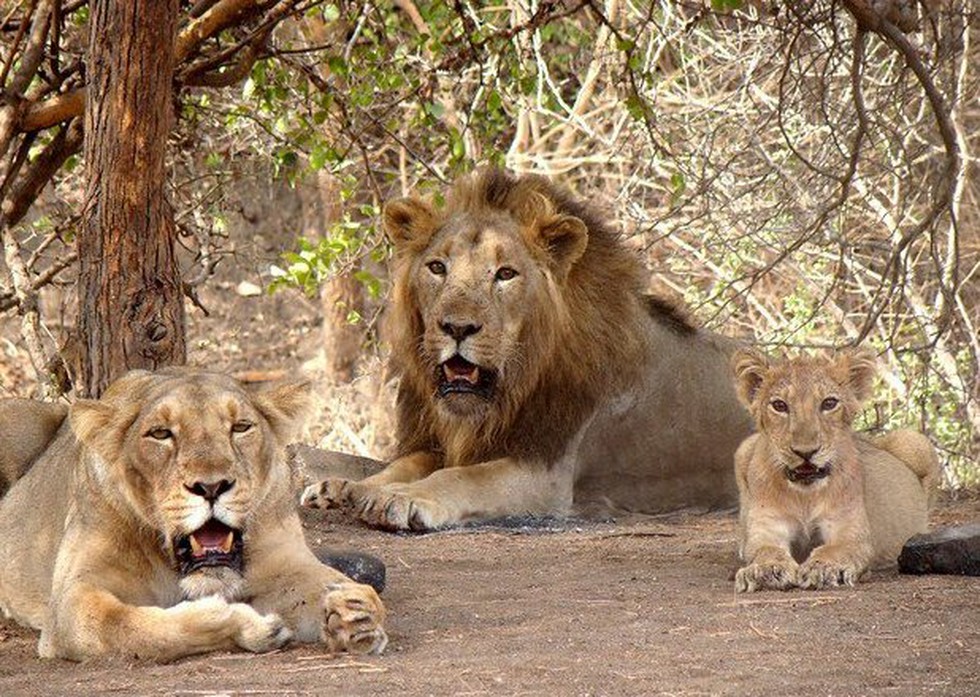
About Girnar Wildlife Sanctuary:
- It is located in the Junagadh district of
- It spans the rugged terrain of the Girnar hills, which are a part of the Saurashtra region.
- It was declared a wildlife sanctuary in 2008.
- It is home to several endangered species, including the Asiatic lion.
- Flora:
- It hosts predominantly dry deciduous forests with species like teak, dhak, acacia and other drought-resistant plants.
- It supports a mix of dense forest, open scrub and grasslands.
- Fauna:
- It is filled with abundant wildlife, including Asiatic lions, spotted deer, Sambar, Chousinghas, Chinkaras, leopards, Indian golden jackals and around 300 species of birds.
- It serves as an extension of the Gir National Park's lion population.
Prelims Pointers
Nov. 29, 2024
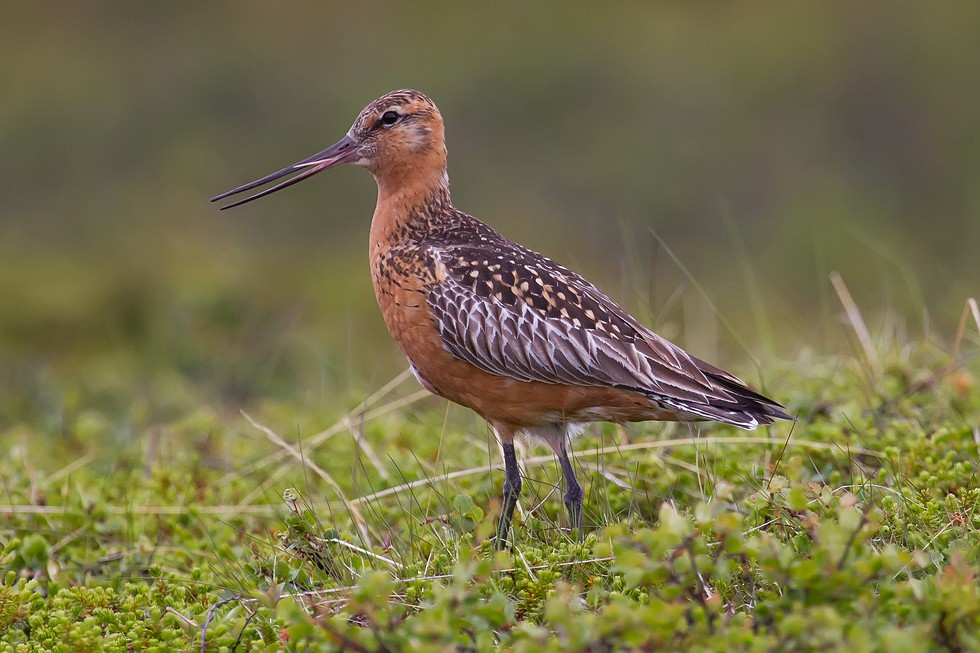
About Bar-Tailed Godwit:
- It is a migratory shorebird renowned for its extraordinary endurance during migration.
- Scientific Name: Limosa lapponica
- Distribution:
- The bar-tailed godwit species is distributed in northern Europe and Asia, western Alaska, Africa, the Persian Gulf, India, southeast Asia, China and Australia.
- These godwit species breed in the Arctic region.
- In India, wintering bar-tailed godwit species are distributed in the states of Gujarat, Maharashtra, Karnataka, Goa, Kerala, Tamil Nadu, Andhra Pradesh, Odisha, West Bengal, Tripura, and Andaman and Nicobar Islands.
- Bar-tailed Godwits are the world record holders for non-stop flight. They have been recorded travelling 13,500 km from Alaska to Tasmania in only 11 days flying at an average of more than 50 km/h, losing almost half of their body weight along the way.
- Features:
- They are quite large waders, with females being bigger than males.
- It is mainly mottled brown above and lighter and more uniform buff below.
- It has dull white underwings and a long, slightly upturned bill.
- As the name suggests, the white tail is barred with brown.
- IUCN Red List: Near Threatened
Prelims Pointers
Nov. 29, 2024

गिरनार वन्यजीव अभयारण्य के बारे में:
-
यह गुजरात के जूनागढ़ जिले में स्थित है।
-
यह गिरनार पहाड़ियों के बीहड़ क्षेत्र में फैला हुआ है, जो सौराष्ट्र क्षेत्र का हिस्सा हैं।
-
इसे 2008 में वन्यजीव अभयारण्य घोषित किया गया था।
-
यह एशियाई शेर सहित कई संकटग्रस्त प्रजातियों का आवास है।
- वनस्पति:
- यहाँ मुख्य रूप से सागौन, ढाक, बबूल और अन्य सूखा प्रतिरोधी पौधों जैसी प्रजातियों के साथ शुष्क पर्णपाती वन हैं।
- यह घने जंगल, खुली झाड़ियों और घास के मैदानों का मिश्रण है।
-
जीव-जंतु:
- यह एशियाई शेर, चित्तीदार हिरण, सांभर, चौसिंघा, चिंकारा, तेंदुए, भारतीय सुनहरे सियार और पक्षियों की लगभग 300 प्रजातियों सहित प्रचुर वन्य जीवों से परिपूर्ण है।
- यह गिर राष्ट्रीय उद्यान की शेर आबादी के विस्तार के रूप में कार्य करता है।
Nov. 28, 2024
Prelims Pointers
Nov. 28, 2024

About Surface Hydrokinetic Turbine Technology:
- It uses kinetic energy of flowing water with practically zero potential head for generation of electrical energy unlike conventional units, which utilize potential energy of water through construction of suitable civil structures such as dam, diversion weir and barrages for creation of necessary 'Head'.
- Advantages
- This technology supports the power sector in meeting the growing demand for base-load, round-the-clock renewable energy, especially in areas with poor grid accessibility.
- Surface Hydrokinetic turbines are easy to install and cost-effective.
- This technology provides a win-win situation both for renewable energy buyers and generators.
- Adoption of SHKT technology shall mark a significant milestone in leveraging India’s extensive water infrastructure, including canals, hydropower tailrace channels, etc. for sustainable energy generation.
- This technology has huge potential in GW scale with a lot of opportunities to harness renewable energy, leading to overall growth of the power
Prelims Pointers
Nov. 28, 2024

About SAREX-24:
- It is conducted under the aegis of National Maritime Search and Rescue Board.
- The theme of the exercise is ‘Enhancing Search and Rescue capabilities through Regional collaboration’.
- It signifies ICG’s commitment to provide succor during large-scale contingencies regardless of location, nationality or circumstances in the Indian Search & Rescue Region and beyond.
- This event will feature various programmes, including table-top exercise, workshop & seminars involving participation of senior officials from government agencies, Ministries & Armed Forces, various stakeholders and foreign delegates.
- The sea exercise involving two large scale contingencies will be carried out off the Kochi coast with participation of ships & aircraft of ICG, Navy, Indian Air Force, Passenger Vessel & Tug from Cochin Port Authority and boats from the Customs.
- The response matrix in the sea exercise will involve various methods to evacuate distressed passengers, wherein the advent of new-age technology using satellite-aided distress beacons, drones to deploy a life buoy, air droppable life rafts, operation of remote controlled life buoy will be demonstrated.
- The exercise is designed not only to evaluate efficiency of operations and coordination with national stakeholders, but also to aptly focus on cooperative engagements with the littorals and friendly countries.
Prelims Pointers
Nov. 28, 2024

About Network Readiness Index:
- It maps the network-based readiness landscape of 133 economies based on their performances in four different pillars: Technology, People, Governance and Impact, covering a total of 54 variables.
- The report has been published by the Portulans Institute, an independent non-profit research and educational institute based in Washington DC.
- Highlights of the report
- India has not only improved its ranking, but also improved its score from 49.93 in 2023 to 53.63 in 2024. It is noteworthy that India leads in several indicators.
- The report states that India secured 1st rank in ‘AI scientific publications’, ‘AI talent concentration’ and ‘ICT services exports’, 2nd rank in ‘FTTH/Building Internet subscriptions’, ‘Mobile broadband internet traffic within the country’ and ‘International Internet bandwidth’, 3rd rank in ‘Domestic market scale’ and 4th rank in ‘annual investment in telecommunication services’.
- India has ranked 2nd in the group of lower-middle-income countries after Vietnam.
- As per the report, India has demonstrated significant digital progress, with notable strengths in technological innovation and digital transformation.
Prelims Pointers
Nov. 28, 2024
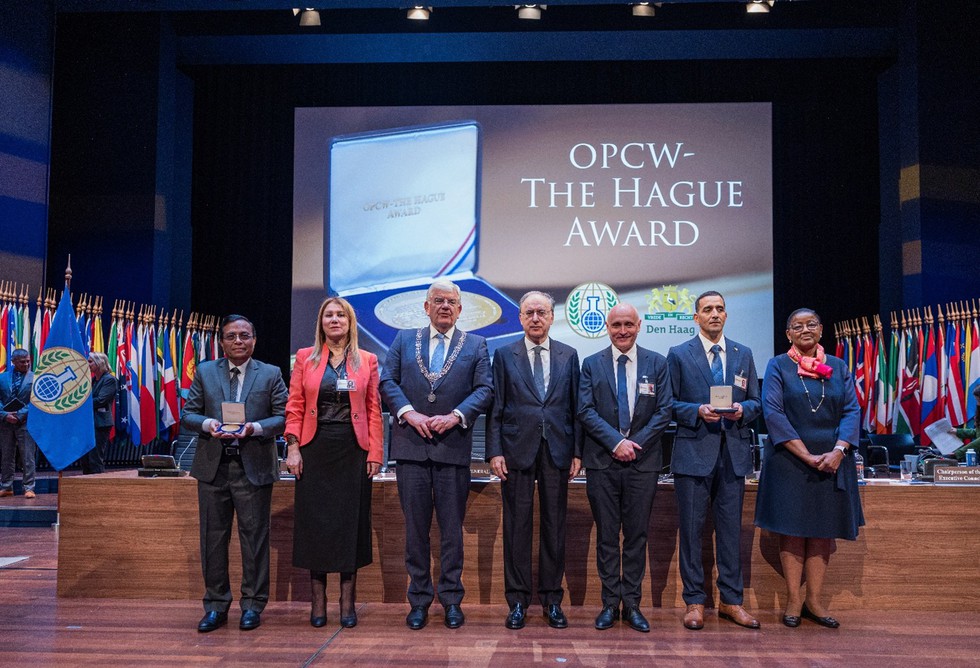
About OPCW- The Hague Award:
- The Organisation for the Prohibition of Chemical Weapons (OPCW) established the ‘OPCW-The Hague Award’ in collaboration with the Municipality of The Hague in 2014.
- It is part of the OPCW’s ongoing effort to highlight significant contributions made by individuals and organisations, widely from academia, researchers, chemical industry, and civil society to achieve a world free of chemical weapons.
- Recipient of the award receives a medallion, a certificate and share of the €90,000 award fund.
Key facts about the Indian Chemical Council (ICC):
- It is India's premier body representing the chemical industry which was established in 1938.
- It is the apex national body representing all branches of the Chemical Industry in India such as Organic & Inorganic Chemicals, Plastics & Petrochemicals & Petroleum Refineries etc.
- The Ministry of Commerce & Industry, Government of India, has authorised all ICC offices (Mumbai, New Delhi, Kolkata and Chennai) to issue the CERTIFICATE OF ORIGIN for the exporters.
- Initiatives of ICC:
- ICC’s ‘Nicer Globe’ initiative has had a substantial impact on chemical transportation safety in India, offering real-time monitoring and emergency response capabilities.
- It has conducted other activities to promote chemical safety and security through its ‘Responsible Care’ (RC) programme and the introduction of the Security Code of RC.
Do you know?
- The Organisation for the Prohibition of Chemical Weapons is the implementing body of the Chemical Weapons Convention (CWC).
- Its mission is to implement the provisions of the Chemical Weapons Convention (CWC) in order to achieve the OPCW’s vision of a world that is free of chemical weapons and of the threat of their use, and in which cooperation in chemistry for peaceful purposes for all is fostered.
- It receives states-parties’ declarations detailing chemical weapons-related activities or materials and relevant industrial activities.
- The OPCW was awarded the Nobel Peace Prize in 2013.
- Headquarters: Hague, Netherlands.
Prelims Pointers
Nov. 28, 2024
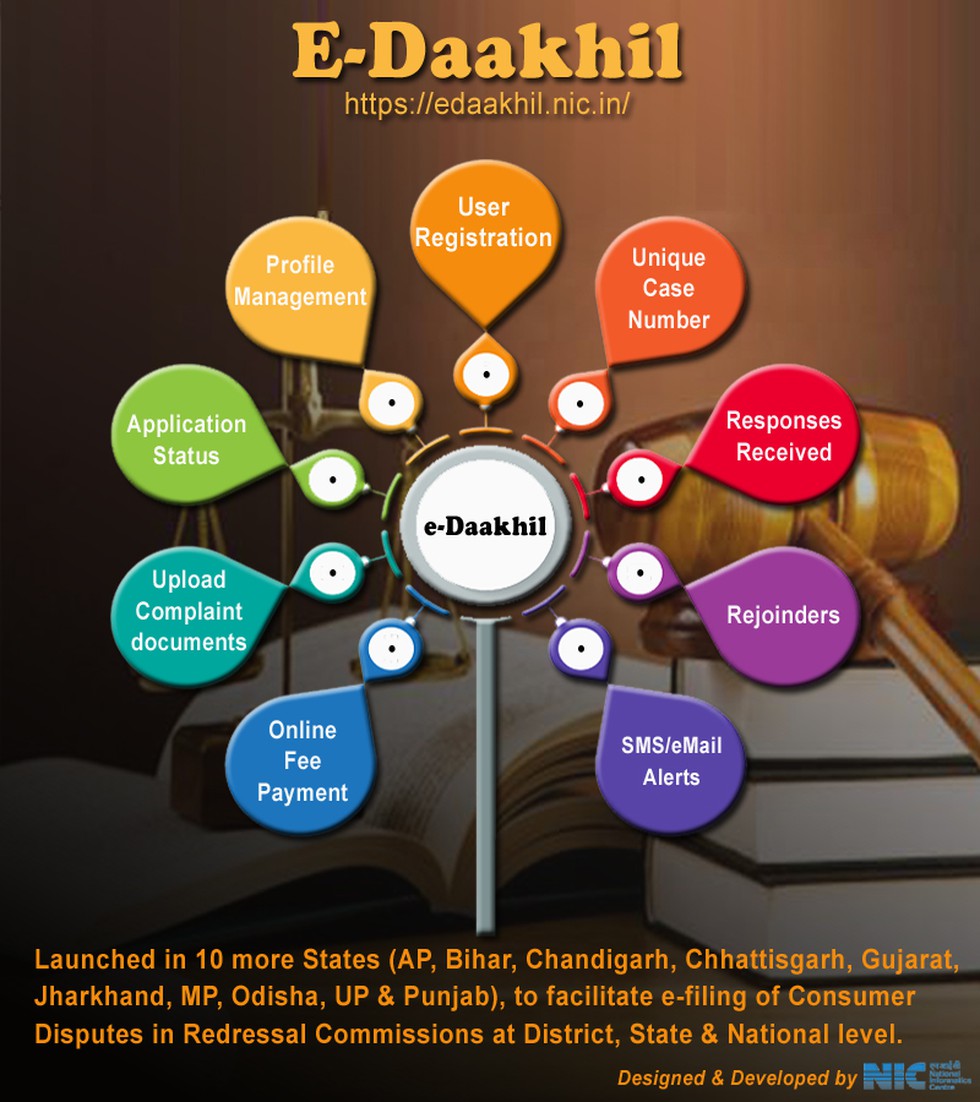
About E-Daakhil Portal:
- It was introduced as an inexpensive, speedy and hassle-free mechanism for filing consumer complaints.
- It was first launched in 2020 by the National Consumer Dispute Redressal Commission.
- Features
- It is an innovative online platform designed to streamline the consumer grievance redressal process, providing an efficient and convenient way for consumers to approach the relevant consumer forum, dispensing the need to travel and be physically present to file their grievances.
- The portal offers an intuitive and easy-to-navigate interface, allowing consumers to file complaints with minimal effort.
- From filing complaints to tracking their status, E-Daakhil ensures a paperless and transparent process with respect to filing of cases.
- Any consumer or Advocate can sign up on the e-Daakhil platforms with the required authentication by receiving an OTP on their registered cell phone or an activation link on their registered email address. They can then move on with filing a complaint.
- The portal has facilitated all aggrieved consumers to submit complaints to consumer commissions online in the comfort of their own homes, to pay the appropriate fees, and track the progress of the case online.
- It is accessible to consumers across all regions of India, from metropolitan cities to remote areas.
Prelims Pointers
Nov. 28, 2024
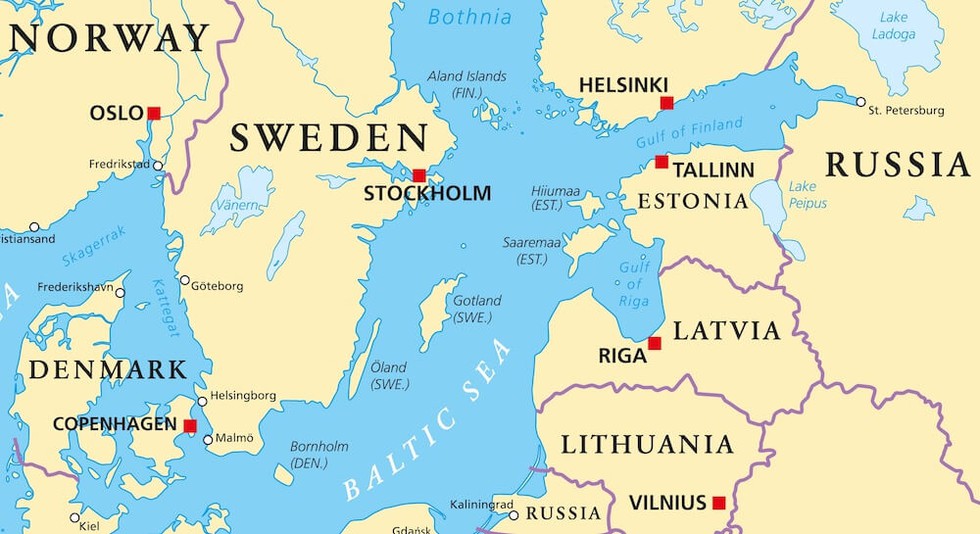
About Baltic Sea:
- It is a semi-enclosed inland sea located in Northern Europe.
- It is an arm of the North Atlantic Ocean.
- It extends northward from the latitude of southern Denmark almost to the Arctic Circle and separating the Scandinavian Peninsula from the rest of continental Europe.
- It connects to the Atlantic Ocean through the Danish Straits.
- It has a coastline of approximately 8,000 km.
- Surrounding Countries: Denmark, Germany, Poland, Lithuania, Latvia, Estonia, Russia, Finland and Sweden.
- It covers an area of approximately 377,000 sq.km. The sea is approximately 1,600 km long and 193 km wide.
- It is connected to the White Sea via the White Sea Canal and to the North Sea’s German Bight via the Kiel Canal.
- The Baltic Sea contains three major gulfs: the Gulf of Bothniato the north, the Gulf of Finland to the east, and the Gulf of Riga slightly to the south.
- It is often cited as the world’s largest brackish inland water body.
- Its water salinity levels are lower than that of the world oceans due to the inflow of fresh water from the surrounding land and the sea’s shallowness.
- More than 250 rivers and streams empty their waters into the Baltic Sea. Neva is the largest river that drains into the Baltic Sea.
- Islands: It is home to over 20 islands and archipelagos. Gotland, located off the coast of Sweden, is the largest island in the Baltic Sea.
Prelims Pointers
Nov. 28, 2024
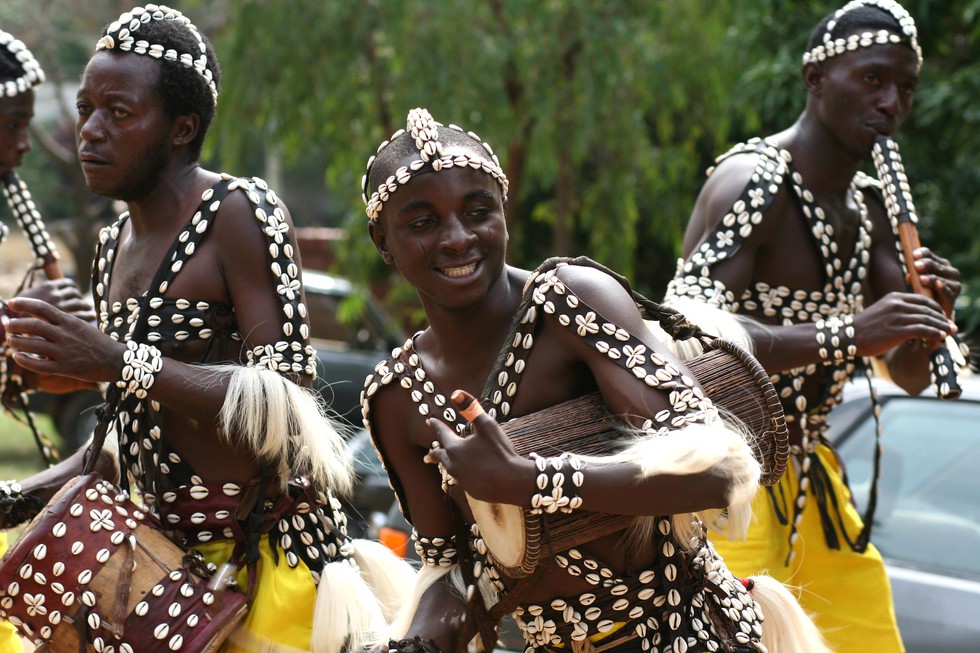
About Jarawa Tribe:
- The Jarawas are an indigenous tribe which lives in the Andaman Islands.
- They are classified as a Particularly Vulnerable Tribal Group (PVTG).
- They inhabit parts of the Middle Andaman and South Andaman Islands. The region is characterized by dense forests, mangroves, and pristine beaches, providing a rich habitat.
- They are regarded as descendants of the Jangil tribe, which is now extinct.
- Some believe the ancestors of the Jarawas were part of the first successful human migrations out of Africa.
- The Jarawas have traditionally been hunter-forager-fishermen, and are known as warriors who fiercely defend their territory.
- They are known for their robust physique and excellent nutritional health.
- Traditional clothing among the Jarawa Tribe is minimal and functional, designed to suit the tropical climate of the Andaman Islands.
- After the British established a colonial presence in the Andaman Islands in 1789, the population of Jarawas declined massively.
- However, the Jarawas survived the British colonial presence and World War II.
- Over the years, the contact between the Jarawas and the outsiders increased, and since 1997, they have initiated contacts with settled populations, where they traded and interacted with tourists, got medical aid and even sent their children to school.
- At present, their number ranges between 250 to 400 individuals.
Prelims Pointers
Nov. 28, 2024
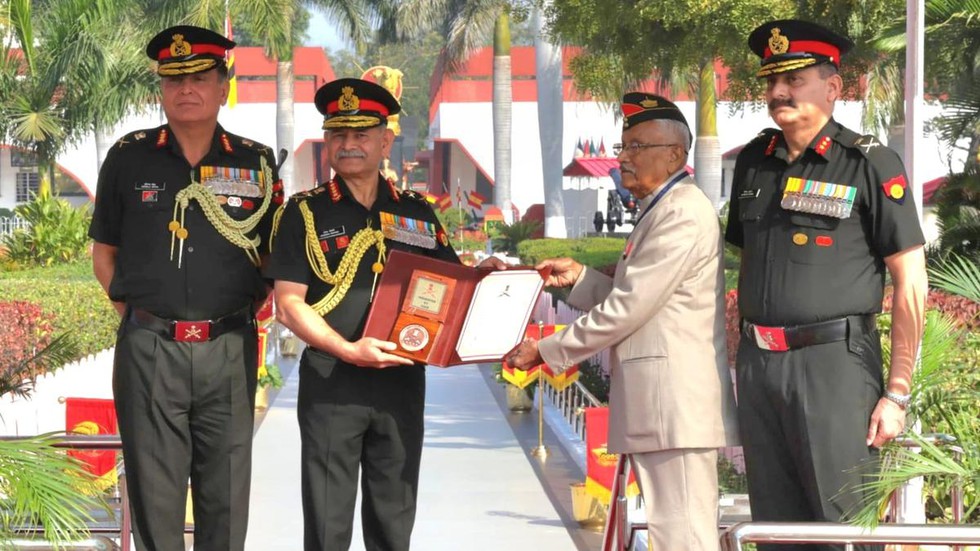
About President’s Colours:
- It is the highest honour that can be awarded to any military unit, military training establishments, or State/Union Territory Police Forces of India.
- It is bestowed upon a military unit in recognition of exceptional service rendered to the nation, both in peace and in war.
- It is also known as “Rashtrapati ka Nishaan” in Hindi.
- History:
- The President’s Colour award has its history way back to ancient Indian traditions.
- In ancient times, whenever any military unit marched, they carried ‘dhwajas‘ or ‘patakas‘ or simply a flag of their respective kings to demonstrate their king’s supremacy. The flag had emblems or messages of their kings to other rulers.
- During British rule in India, the tradition continued. The military unit of the British Armed Forces carried the king’s/queen’s version of the flag whenever they went for a military march.
- On November 23, 1950, the ‘king’s colour’of the erstwhile British Indian regiments was laid to rest in Chetwode Hall, Dehradun, to make way for the ‘colours’ of the President of the Republic of India.
- The Indian Navy was the first Indian Armed Forces to be awarded the President Colour by Dr. Rajendra Prasad on May 27, 1951.
- Award:
- It is a type of special flag, also known as ‘Nishaan’, which is awarded to a military unit in an organised ceremony.
- Colours are generally presented personally by the President, who is the Supreme Commander of the Armed Forces, and in case of the President’s non-availability, by the Service Chief.
- The flag consists of a golden border in the middleand the insignia of a respective military unit, training establishments, and police forces in the centre.
- Sometimes, it may also contain the motto, important achievements and battle participation of those military units to which the award is bestowed.
- During any ceremonial parade, the President’s Colour, i.e., the special flag of a military unit, is kept in a special positionand soldiers often march with the President’s Colour on important dates, like their establishment anniversary.
Prelims Pointers
Nov. 28, 2024
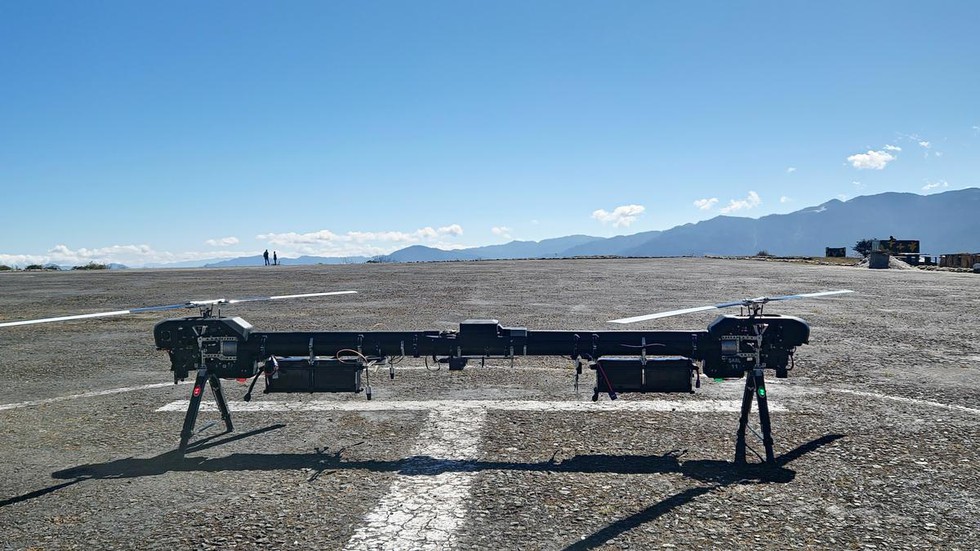
About Sabal-20 Logistics Drone:
- It is an electric-unmanned helicopter based on variable pitch technology, designed specifically for aerial logistics.
- It was manufactured by the private drone manufacturer
- It is designed to fulfill demanding operational requirements, assisting with tasks including precise logistics, high-altitude operations and long-distance deliveries.
- Features:
- The drone features tandem rotor configuration and the design “ensures remarkable stability, superior high-altitude performance, minimised turbulence risk and outstanding lifting capacity across diverse terrains”.
- It is capable of carrying payloads of up to 20 kg, which is equivalent to 50 percent of its own weight, with scalable options for future requirements.
- It can operate in confined and rugged terrain, while its low RPM (Revolutions Per Minute) design minimises noise, enhancing stealth in sensitive missions.
- One of the standout features of the Sabal 20 is its Vertical Take-Off and Landing (VTOL) technology, which allows the drone to operate in confined spaces and difficult environments.
- It also has cutting-edge autonomous flight capabilities and user-friendly controls that simplify complex tasks, ensuring reliable performance even when it is beyond the line of sight of the operator.
Prelims Pointers
Nov. 28, 2024

About ‘Bal Vivah Mukt Bharat’ Campaign:
- It was launched by the Ministry of Women and Child Development, Government of India.
- It seeks to engage multiple stakeholders in a collective effort to eliminate child marriage in India.
- It will focus on the seven high-burden states: West Bengal, Bihar, Jharkhand, Rajasthan, Tripura, Assam and Andhra Pradesh and nearly 300 high-burden districts where child marriage rates are high as compared to the national average.
- The campaign will call on every State and Union Territory to devise an action plan aimed at reducing the child marriage rates below 5% by 2029.
- Child marriage rates dropped from 47.4% in 2006 to 23.3% in 2019-21, according to government data.
- A key feature of the initiative is the launch of the Child Marriage Free Bharat portal, a platform to raise awareness, report cases, and monitor progress.
- The portal is designed to facilitate effective monitoring of Child Marriage Prohibition Officers (CMPOs) by strengthening supervision and evaluation mechanisms to ensure their active role in preventing child marriages and supporting affected individuals.
- People will be able to register their complaints pertaining to child marriage, and these will be directed straight to the concerned CMPOs anywhere in the country.
- All States have been directed to log on to the portal and register the CMPOs so that there is real-time monitoring of cases.
- Nodal officers will be assigned at the Centre for monitoring the portal.
- It seeks to enhance public access to information, making it easily available to enable better communication and support.
Nov. 27, 2024
Prelims Pointers
Nov. 27, 2024
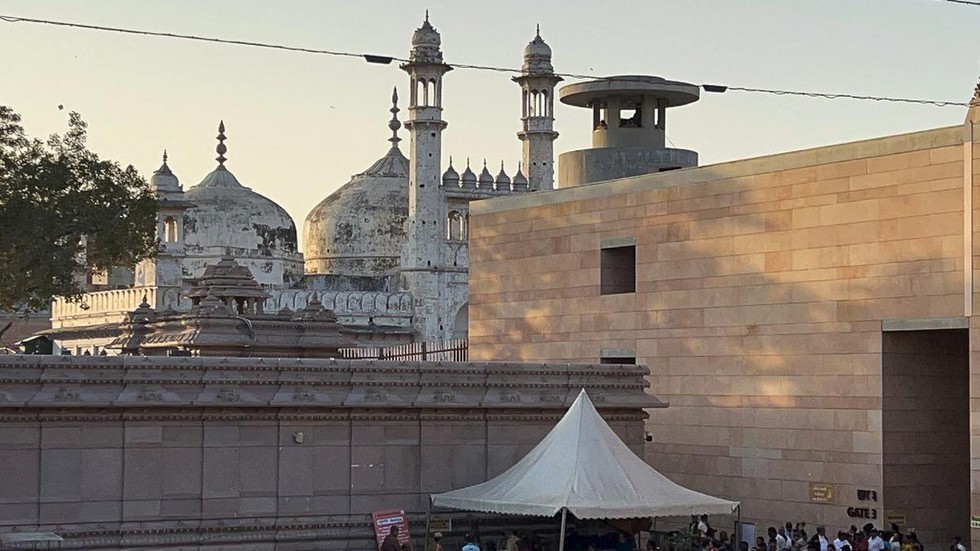
About Places of Worship (Special Provisions) Act, 1991:
- It is described as “An Act to prohibit conversion of any place of worship and to provide for the maintenance of the religious character of any place of worship as it existed on the 15th day of August 1947, and for matters connected therewith or incidental thereto.”
- No person can convert any place of worship of any religious denomination or any section thereof into a place of worship of a different section of the same religious denomination or of a different religious denomination.
- It also prohibits court intervention in problems concerning the religious nature of such places.
- Exemption:
- The disputed site at Ayodhya was exempted from the Act. Due to this exemption, the trial in the Ayodhya case proceeded even after the enforcement of this law.
- Besides the Ayodhya dispute, the Act also exempted:
- Any place of worship which is an ancient and historical monument, or an archaeological site covered by the Ancient Monuments and Archaeological Sites and Remains Act, 1958.
- A suit that has been finally settled or disposed of.
- Any dispute that has been settled by the parties or conversion of any place that took place by acquiescence before the Act commenced.
Prelims Pointers
Nov. 27, 2024
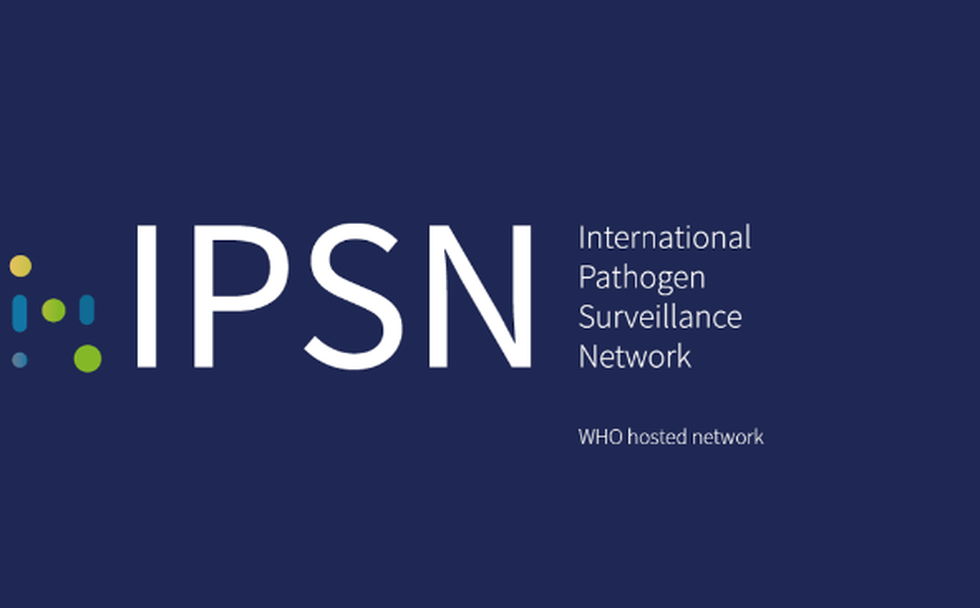
About International Pathogen Surveillance Network (IPSN):
- It is a public health network to prevent and detect infectious disease threats before they become epidemics or pandemics.
- The IPSN, with a Secretariat hosted by the World Health Organization (WHO) Hub for Pandemic and Epidemic Intelligence, brings together experts worldwide at the cutting-edge of genomics and data analytics, from governments, philanthropic foundations, multilateral organizations, civil society, academia and the private sector.
- All share a common goal: to detect and respond to disease threats before they become epidemics and pandemics, and to optimize routine disease surveillance.
- IPSN will rely on insights generated from pathogen genomics, which helps analyze the genetic material of viruses, bacteria, and other disease-causing microorganisms to determine how they spread and how infectious or deadly they may be.
- Using these data, researchers can identify and track diseases to improve outbreak prevention, response, and treatments.
- Members will work together in dedicated groups focusing on specific challenges, supported by funding through the IPSN to scale up ideas and projects in pathogen genomics.
- By strengthening the pathogen genomic surveillance ecosystem, the IPSN enables faster detection of new pathogens and enhanced tracking of the spread and evolution of diseases.
Prelims Pointers
Nov. 27, 2024
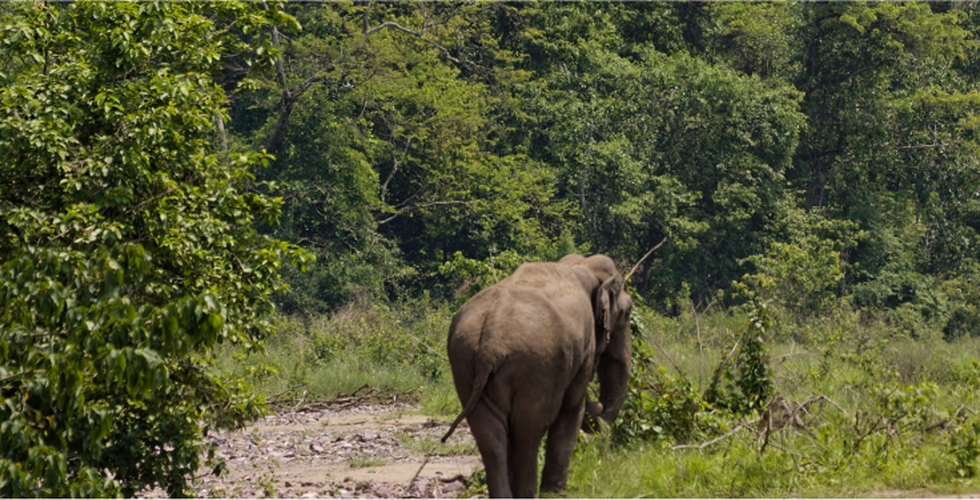
About Raimona National Park:
- It is located along the Indo-Bhutan border in Kokrajhar district in the Bodoland Territorial Region (BTR), Assam.
- It was declared a national park on June 5, 2021.
- It shares contiguous forest patches of Phibsoo Wildlife Sanctuary and Jigme Singye Wangchuck National Park in Bhutan, creating a trans-boundary conservation landscape of more than 2,400 sq km.
- Rivers: The Sankosh River runs beside the west of the park and the Saralbhanga River on the eastern part.
- Vegetation: It includes as many as twelve different types and sub-types of forests ranging from very moist sal forests, sub-Himalayan high alluvial semi-evergreen forests, savannah forests, moist-mixed deciduous forests, riparian fringing forests, to khair-sissoo forests.
- Flora: This park flourishes with myriads of orchid species, other tropical rainforest species, and riverine grasslands.
- Fauna:
- The park is famous for its endemic species, golden langur, which has been named the mascot of the Bodoland region.
- It is also inhabited by various other species, such as elephants, Bengal tiger, wild bison, white-spotted deer, clouded leopard and wild buffalo.
Prelims Pointers
Nov. 27, 2024
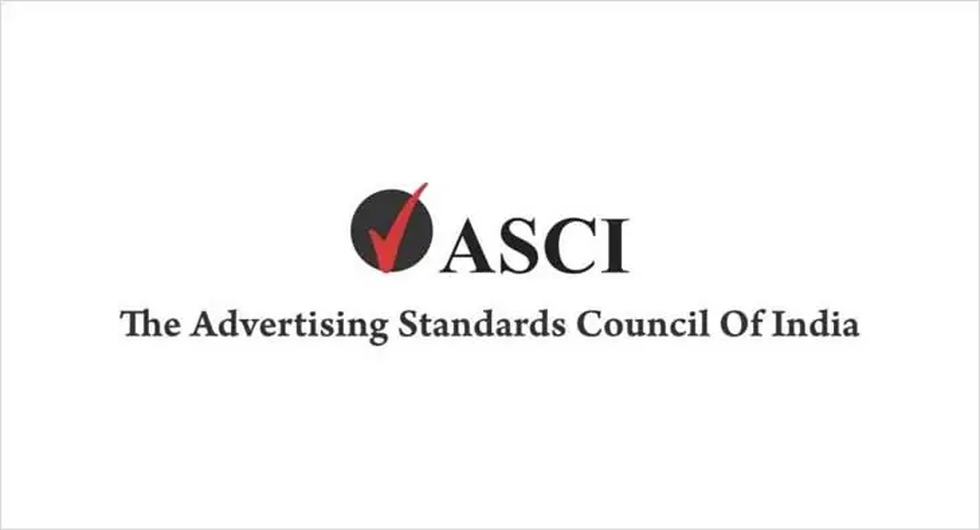
About Advertising Standards Council of India (ASCI):
- It is a voluntary self-regulatory organization of the advertising industry in India.
- Established in 1985, ASCI is registered as a non-profit company under Section 25 of the Company Act, 2013.
- ASCI is committed to the cause of self-regulation in advertising, ensuring the protection of the interests of consumers.
- ASCI seeks to ensure that advertisements conform to its Code for Self-Regulation, which requires advertisements to be legal, decent, honest and truthful and not hazardous or harmful while observing fairness in competition.
- ASCI looks into complaints across all media, such as Print, TV, Radio, hoardings, SMS, Emailers, Internet/web-site, product packaging, brochures, promotional material, and point of sale material, etc.
- Structure:
- A Board of Governors includes 16 members drawn from prominent businesses, media agencies, and advertisers, among others.
- The Consumer Complaints Council (CCC) is a body that investigates complaints and decides whether advertisements adhere to the Advertisement Standards Council of India Code.
- A Secretariat, headed by the Secretary General, oversees the day-to-day operations of the organisation.
- While ASCI is not a government body, its role has been widely acknowledged, and in 2006, the Ministry of Information and Broadcasting issued a mandate requiring all TV advertisements in India to follow ASCI’s codes.
- ASCI is a part of the Executive Committee of the International Council on Ad Self-Regulation (ICAS).
Prelims Pointers
Nov. 27, 2024
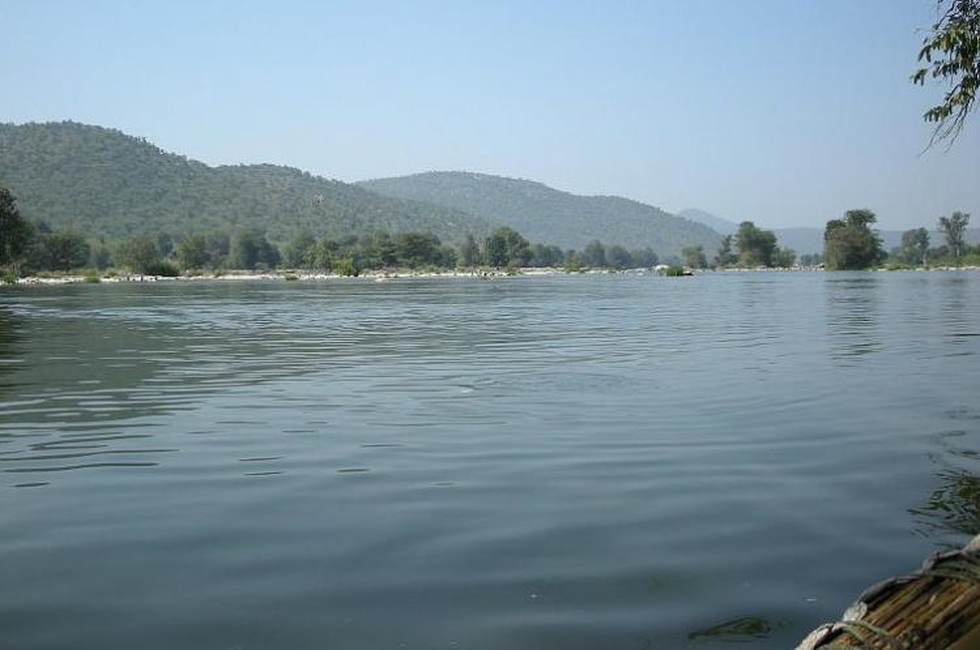
About Pennaiyar River:
- It is a major river in southern India, flowing through Tamil Nadu and Karnataka.
- It is also known as the South Pennar River, Dakshina Pinakini in Kannada, and Thenpennai, Ponnaiyar, in Tamil.
- Course:
- Origin: It originates in the Nandi Hills in the Chikkaballapura district of Karnataka.
- It then flows southward for 80 km through Karnataka to northwestern Tamil Nadu, where it turns southeastward and flows 320 km to enter the Bay of Bengal at Cuddalore, Tamil Nadu.
- The basin is bounded on the northwest and south by various ranges of the Eastern Ghats, like the Velikonda Range, the Nagari Hills, the Javadhu Hills, the Shevaroy Hills, the Chitteri Hills and the Kalrayan Hills, and in the east by the Bay of Bengal.
- It is the second largest interstate east-flowing river basin among the 12 basins lying between the Pennar and Cauvery basins.
- It drains an area of 16,019 sq.km., out of which nearly 77 percent lies in Tamil Nadu.
- Major tributaries are the Chinnar, Markanda, Vaniar, and Pamban.
- The river is extensively dammed for irrigation, especially in Tamil Nadu.
Prelims Pointers
Nov. 27, 2024
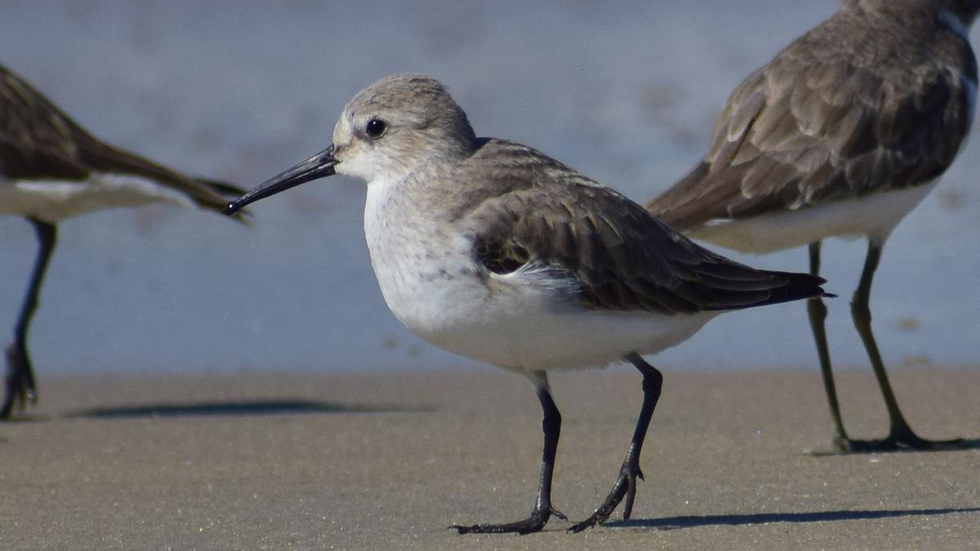
About Dunlin:
- It is a small shorebird with a droopy bill and is a fully migratory circumpolar breeder.
- Appearance:
- Dunlins are medium-sized sandpipers with a slightly down-curved black bill.
- Unique feature: During the summer breeding season, they have a large black belly spot and orange feathers on their back and in winter and nonbreeding season, they are all white with a gray back and head.
- A group of Dunlin is known as a "flight," "fling," or "trip."
- Habitat: During the breeding season, they live in coastal tundra areas. In the winter, they live along mudflats, estuaries, marshes and coastlines.
- They spend the summer breeding season in the arctic and subarctic regions, and winter along both coasts of the United States and Mexico.
- Diet: Insects form the main part of the Dunlin's diet on the nesting grounds; they eat mollusks, worms, and crustaceans during the winter and on migration.
- Conservation status
- IUCN: Near threatened
- Threats: It is threatened by habitat loss caused by wetland draining, global warming, and invasive plants, particularly at migration staging and wintering areas.
It is also vulnerable to avian influenza.
Prelims Pointers
Nov. 27, 2024
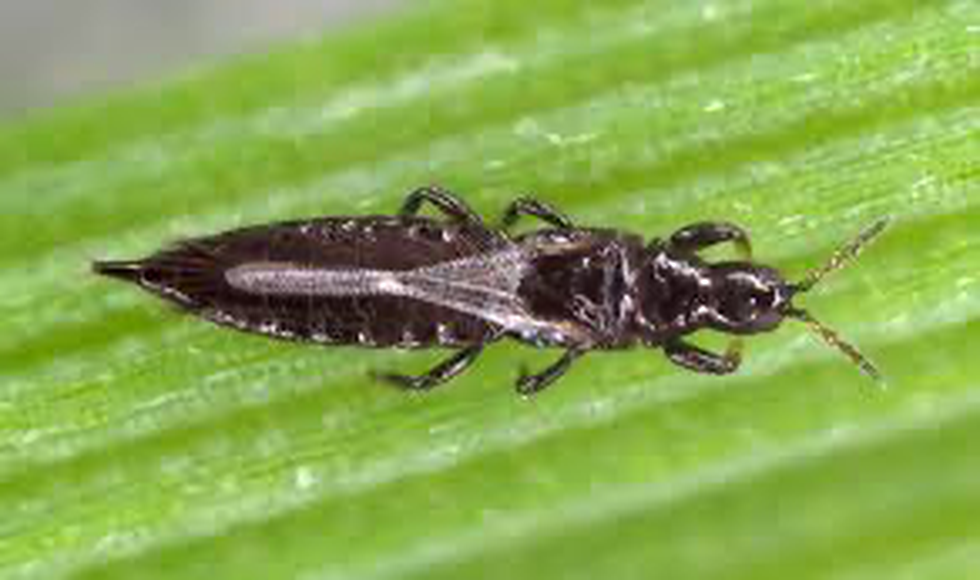
About Black thrips:
- It is an invasive pest species.
- It was first reported in India in 2015 on Papaya.
- These insects lacerate the tender leaves and flowers before consuming the tissues. Lacerations, especially of the flower, impair fruit formation.
- It is polyphagous, i.e., it can feed on different plant species.
- It feeds on tender flowers, causes large scale shedding of flowers, stunting and malformation of fruits and fruit drop in chilli, leading to severe yield loss.
- In addition to chilli, it damages crops such as cotton, bell pepper, red and black grams, mango, watermelon and others.
- From 2015, the pest has been found feeding on both agriculture, horticulture and ornamental crops and widely distributed across Andhra Pradesh, Assam, Chhattisgarh, Gujarat, Karnataka, Kerala, Maharashtra, Odisha and Tamil Nadu.
- Reasons for its upsurge in India:
- Absence of natural enemies of this particular invasive pest in the area of invasion for natural control of the pest species and excessive use of chemical pesticides and staggered plantings are the possible reasons for their outbreak.
Prelims Pointers
Nov. 27, 2024

About Design Law Treaty:
- It seeks to harmonize the procedural frameworks for industrial design protection, improving the efficiency and accessibility of registration processes across multiple jurisdictions.
- The treaty requires 15 contracting parties to enter into force.
- Key features
- It provides for a grace period of 12 months following a first disclosure of the design, during which such disclosure will not affect its validity for registration.
- It provides relief measures and offers some flexibility to applicants to prevent them from losing their rights if they miss a deadline.
- It simplifies the procedure for requesting the renewal of a design registration.
- It promotes the introduction of e-filing systems for designs and the electronic exchange of priority documents.
- It ensures the availability of technical assistance to developing and least developed countries for the implementation of the treaty.
- Benefits
- Its goal is to ensure that the benefits of streamlined design protection are accessible to all stakeholders, with particular emphasis on Small and Medium-sized Enterprises (SMEs), startups and independent designers.
- By standardizing procedural requirements, the DLT reduces administrative burdens, thereby promoting global creativity in design.
- When combined with initiatives like the Startup India program and the Startups Intellectual Property Protection (SIPP) scheme, these provisions will help empower startups and SMEs to secure design rights globally, boosting their competitiveness and supporting market growth.
- India recently signed the final act of this treaty.
Prelims Pointers
Nov. 27, 2024

About Sjögren’s disease:
- It is a chronic disorder in which the immune system mistakenly targets the body’s moisture-producing glands.
- It is an under-recognised autoimmune condition that often remains undiagnosed for years.
- Prevalence: It is roughly 10 times more common in women than in men and usually manifests in the 30s and 40s, although it can appear at any age, even in children.
- Symptoms
- The most common complaints are dry eyes and dry mouth, which can severely impact quality of life.
- Dry eyes may feel gritty, especially on awakening and during prolonged screen use, while dry mouth can lead to difficulty in swallowing and a significantly increased risk of dental problems.
- Sjögren’s can present with joint pain, fatigue, and swelling in the salivary glands, making it a complex, multisystem disease.
- Treatment:
- It involves managing dryness with salivary stimulants and substitutes and lifestyle adjustments. For systemic symptoms, immunosuppressive medications are used.
- Patients need to avoid triggers like air conditioning and excessive screen time.
- Sunglasses with UV protection and frequent use of gel-based lubricating drops can make a significant difference.
Prelims Pointers
Nov. 27, 2024

About Global Matchmaking Platform:
- It is designed to fast-track the decarbonisation of heavy-emitting industries in emerging and developing economies.
- The idea of the Global Matchmaking Platform was born in December 2023 at the 28th United Nations Climate Change conference (COP28), with the launch of the Climate Club.
- It connects country-specific needs with global technical and financial assistance to reduce emissions in energy and emissions-intensive industrial sectors.
- It connects countries with a network of delivery partners, offering comprehensive technical and financial support for industrial decarbonization efforts.
- These partners assist nations in key areas such as policy development, the transfer of innovative technologies and facilitating investments to drive the transition to zero and low-emission industrial practices including assistance for enhancing the emissions goals.
- This mechanism allows countries to tailor their decarbonization pathways while streamlining access to guidance and resources provided by partner organizations to achieve deep emissions reductions.
- The GMP for industry decarbonisation is being built as a support mechanism of the Climate Club, with the secretariat hosted by the UNIDO.
- Its activities are also supported by the Climate Club interim Secretariat jointly hosted by the Organisation for Economic Co-operation and Development (OECD) and the International Energy Agency (IEA).

